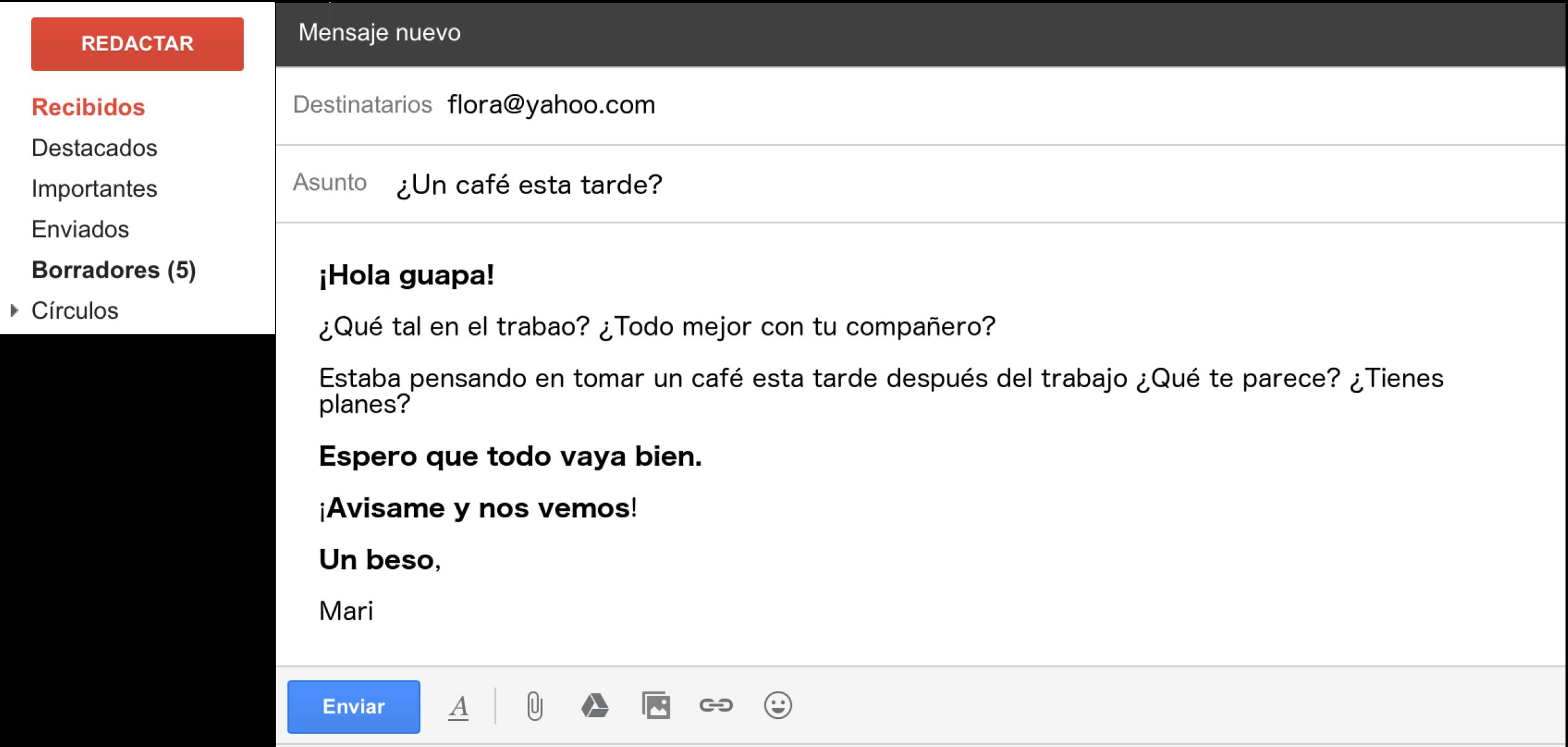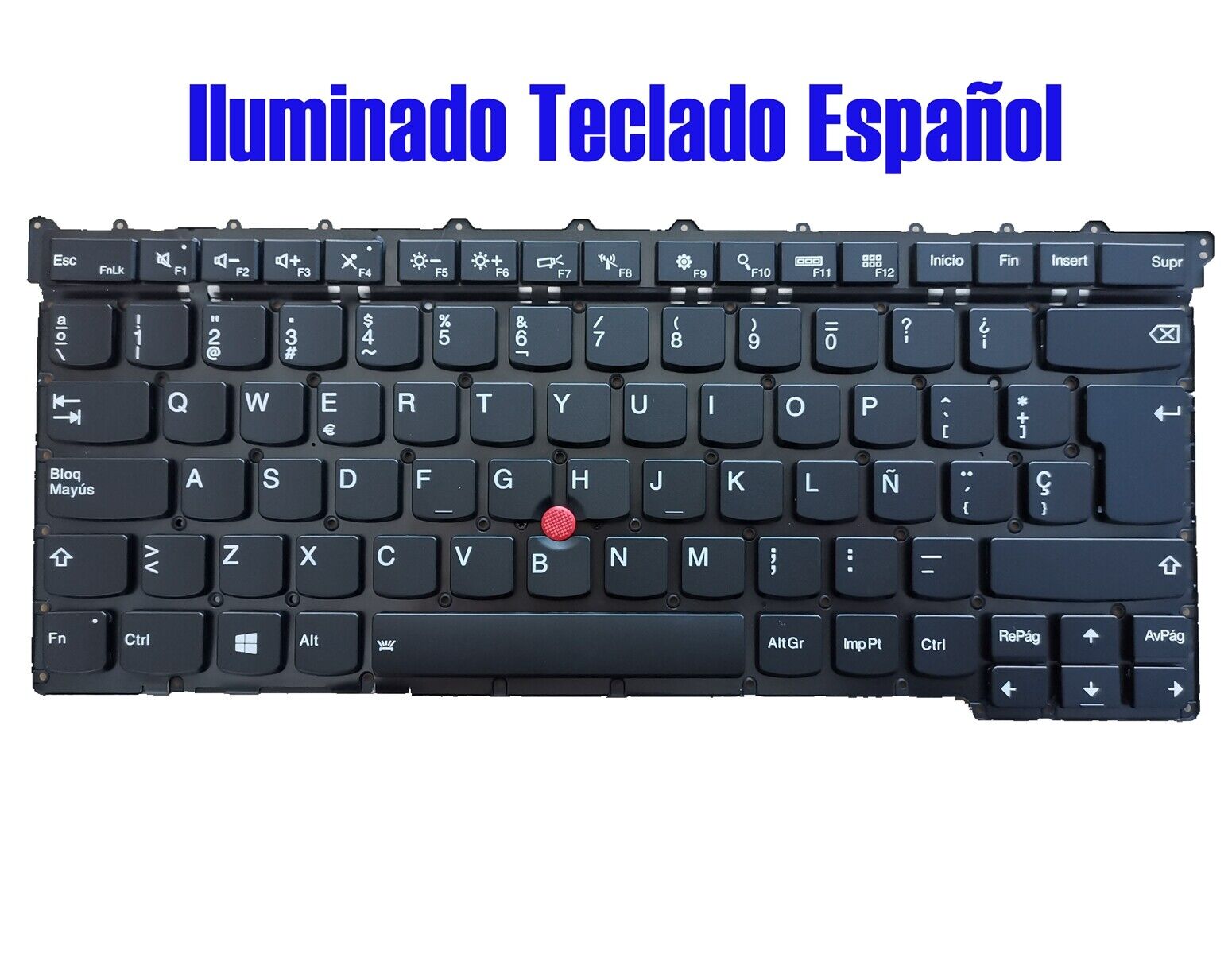Salutations in Spanish
When it comes to ending an email in Spanish, the salutation plays an important role in setting the tone and level of formality. The choice of salutation depends on the relationship between the sender and recipient, as well as the level of familiarity and respect required. Let’s explore the different salutations commonly used in Spanish email communication.
In formal contexts, it is customary to use the salutation “Estimado/a” (Dear) followed by the recipient’s title and last name. For example, “Estimado Sr. Rodríguez” (Dear Mr. Rodríguez) or “Estimada Sra. González” (Dear Mrs. González). This is generally used when writing to someone in a professional or formal context, such as a colleague, client, or business contact.
For more informal or friendly emails, the salutation “Hola” (Hello) or “Querido/a” (Dear) followed by the recipient’s first name can be used. This is commonly used when writing to friends, family members, or acquaintances. For instance, “Hola Juan” (Hello Juan) or “Querida Ana” (Dear Ana).
It’s important to note that the use of formal or informal salutations may vary depending on the regional customs and cultural norms of Spanish-speaking countries. For instance, in some Latin American countries, people may use terms like “Estimado/a señor/señora” as a more formal and respectful greeting.
When writing to a group of recipients, the salutation can be adapted accordingly. For example, “Estimados señores” (Dear sirs) or “Estimadas señoras” (Dear ladies) for a formal mailing list, or “Hola a todos” (Hello everyone) for a more casual greeting.
Remember to always consider the context and the level of formality required when choosing the appropriate salutation for your email. It sets the tone for the rest of the communication and helps establish a respectful and professional relationship with the recipient.
Formal vs. Informal Endings
Just as with salutations, the choice of ending for an email in Spanish depends on the level of formality and the relationship between the sender and recipient. Understanding the difference between formal and informal endings is crucial to ensure that the tone of your email aligns with the intended context. Let’s explore the distinctions between these two types of endings.
Formal endings are commonly used in professional or formal contexts where a high level of respect is expected. These endings typically include phrases like “Atentamente” (Sincerely) or “Cordialmente” (Kind regards), followed by the sender’s name or job title. For example, “Atentamente, María García” or “Cordialmente, Miguel Torres”. These formal endings convey a sense of professionalism and show respect towards the recipient.
Informal endings, on the other hand, are more appropriate for casual or friendly email exchanges. They allow for a warmer and less rigid tone. Common informal endings include phrases like “Un abrazo” (Hugs), “Saludos” (Greetings), or “Un saludo cordial” (Warm regards). These endings are often used among friends, family members, or colleagues with whom the sender shares a close relationship.
It’s important to use the appropriate ending based on the level of formality required by the context. Mixing formal and informal endings can lead to confusion or give off an inappropriate impression. For example, using an informal ending in a professional setting may come across as unprofessional or disrespectful, while using a formal ending in a casual email may sound overly distant or cold.
When in doubt, it’s generally safer to err on the side of formality, especially when writing to individuals you are not familiar with or in a professional setting. As you become more acquainted with the recipient and develop a closer relationship, you can gradually shift towards more informal endings that reflect the level of familiarity.
Remember to consider the recipient’s cultural background and the norms of the specific Spanish-speaking region you are communicating with. Different countries may have variations in their preferred endings, so it’s crucial to be mindful of these differences.
Common Formal Endings in Spanish
When it comes to ending a formal email in Spanish, there are several common phrases that are widely used. These formal endings help to maintain a sense of professionalism and respect in your communication. Let’s explore some of the most commonly used formal endings in Spanish.
1. “Atentamente” – This is one of the most frequently used formal endings in Spanish. It translates to “Sincerely” in English and is often used in a variety of formal settings, such as business or professional correspondence. For example, “Atentamente, María Pérez.”
2. “Cordialmente” – This phrase translates to “Kind regards” in English. It is another formal ending commonly used in Spanish emails. It conveys a sense of warmth and goodwill while maintaining a formal tone. For instance, “Cordialmente, Roberto Gómez.”
3. “Saludos cordiales” – This phrase translates to “Warm regards” or “Best regards” in English. It is a polite and respectful way to end a formal email in Spanish. It can be used in a variety of professional settings and is a more formal alternative to “Cordialmente.” For example, “Saludos cordiales, Ana García.”
4. “Atentos saludos” – This phrase can be translated as “Kind regards” or “Best regards” in English. It is a slightly less formal alternative to “Atentamente” and is commonly used in business emails. It conveys a sense of professionalism and respect. For instance, “Atentos saludos, Carlos Rodríguez.”
5. “Le saluda atentamente” – This phrase translates to “Yours faithfully” or “Yours sincerely” in English. It is a formal and respectful closing used primarily in professional or official emails. It is typically followed by the sender’s name or job title. For example, “Le saluda atentamente, Carmen Navarro.”
Remember, when using these formal endings, it is essential to ensure that they align with the level of formality required by the context. Additionally, consider factors such as the recipient’s position, the nature of the relationship, and the cultural norms of the specific Spanish-speaking region you are communicating with.
Common Informal Endings in Spanish
When writing an informal email in Spanish, there are various informal endings that can be used to convey a more friendly and casual tone. These endings are well-suited for personal emails, messages to friends or family members, or informal communication with colleagues. Let’s explore some of the common informal endings in Spanish.
1. “Un abrazo” – This phrase translates to “Hugs” in English. It is a warm and affectionate way to end an email. It is often used when there is a close relationship between the sender and recipient. For example, “Un abrazo, José.”
2. “Saludos” – This word translates to “Greetings” or “Regards” in English. It is a versatile and commonly used ending in informal emails. It conveys a friendly tone and can be used in a variety of informal settings. For instance, “Saludos, Laura.”
3. “Un saludo afectuoso” – This phrase translates to “Warm regards” or “Affectionate greetings.” It is a more affectionate and personal way to end an informal email. It is often used when there is a close friendship or familial relationship. For example, “Un saludo afectuoso, Carlos.”
4. “Hasta pronto” – This phrase translates to “See you soon” in English. It is a casual and friendly way to say goodbye in an informal email. It is commonly used when the sender and recipient have a familiar relationship. For instance, “Hasta pronto, Ana.”
5. “Que estés bien” – This phrase translates to “Take care” or “Hope you’re well” in English. It is a caring and friendly way to end an informal email. It shows concern for the recipient’s well-being and is commonly used among friends or family members. For example, “Que estés bien, Rodrigo.”
When using these informal endings, it’s important to consider the level of familiarity and the nature of the relationship with the recipient. These endings create a more relaxed and personal tone in your communication, making it suitable for informal or friendly settings.
Remember, always be mindful of cultural and regional differences in the use of informal endings, as some expressions may vary depending on the Spanish-speaking country or community.
Gender Considerations
When ending an email in Spanish, it is important to be mindful of gender considerations. Spanish is a language that assigns gender to nouns, including names and titles. The choice of gender-specific endings can vary depending on the gender of the recipient and the sender. Let’s explore some key considerations when it comes to gender in email endings.
1. Gendered Salutations: When addressing the recipient in the salutation, it is important to use the appropriate gender agreement. For example, “Estimado” is used when addressing a male recipient, and “Estimada” is used for a female recipient. It is crucial to pay attention to the gender of the recipient and apply the correct salutation accordingly.
2. Neutral Endings: In some cases, it may be preferable to use gender-neutral endings to avoid assumptions or potential misinterpretations. Neutral phrases like “Estimado/a” (Dear) or “Saludos” (Greetings) can be used when the gender of the recipient is unknown, or when addressing a mixed-gender group of recipients.
3. Inclusive Language: In recent years, there has been a growing emphasis on inclusive language to recognize and respect gender diversity. To be more inclusive, you can use endings that apply to all genders, such as “Atentamente” (Sincerely) or “Cordialmente” (Kind regards), without specifying the gender of the recipient.
4. Sender’s Gender: When signing off the email, the ending should align with the sender’s gender. For example, a male sender may use “Atentamente, Pablo” (Sincerely, Pablo), while a female sender may use “Cordialmente, Carmen” (Kind regards, Carmen). It is important to be consistent with the gender of the sender throughout the email.
5. Language Evolution: It’s worth noting that the use of gender-neutral or inclusive language is an evolving aspect of Spanish communication. Different individuals and contexts may have varying perspectives and preferences. Staying informed about current discussions on gender-inclusive language can help guide your approach.
Remember to be respectful and sensitive to the gender identity and preferences of the individuals you are communicating with. Adapting your language and endings to accommodate gender considerations demonstrates inclusivity and respect in your email communication.
Tips for Ending Emails in a Respectful and Friendly Manner
When it comes to ending an email in Spanish, it’s important to strike a balance between being respectful and friendly. The way you conclude your email can leave a lasting impression on the recipient. Here are some tips to help you end your emails in a respectful and friendly manner.
1. Consider the Relationship: Tailor the tone of your email ending based on your relationship with the recipient. Use more formal endings for professional contacts or individuals you are not familiar with. For close friends or family members, opt for more casual and affectionate endings.
2. Show Appreciation: Express gratitude or appreciation for the recipient’s time, attention, or any assistance they may have provided. Phrases such as “Muchas gracias” (Thank you very much) or “Agradezco su amable atención” (Thank you for your kind attention) can be included in your email ending to show appreciation.
3. Maintain Professionalism: Even in friendly emails, maintain a degree of professionalism. Use appropriate language and avoid slang or informal expressions that may be too casual for a professional context. Strike a balance between warmth and maintaining a level of professionalism.
4. Use Polite Phrases: Incorporate phrases that reflect politeness and respect in your email ending. Some examples include “Le saludo con el mayor respeto” (I greet you with the utmost respect) or “Reciba un cordial saludo” (Receive a cordial greeting). These phrases add a touch of formality and politeness to your email.
5. Tailor the Ending: Consider the content and purpose of your email when choosing the ending. If your email is requesting a favor or seeking assistance, end with a question or request politely. If you are providing information or making a recommendation, end with a statement expressing your willingness to answer any further questions.
6. Be Concise: Keep your email ending concise and to the point. Avoid lengthy or unnecessary phrases that may distract from the main message of your email. A brief and thoughtful ending is appreciated and leaves a positive impression.
Remember, the goal of ending an email is to leave your recipient with a positive impression of you and your communication. Take the time to choose the appropriate phrases and tone that resonate with the context and relationship with the recipient. By following these tips, you can end your emails in a respectful and friendly manner.
Examples of Email Endings in Spanish
To give you a better understanding of how to end your emails in Spanish, here are some examples of common email endings:
1. Formal Endings:
- “Atentamente, María López” (Sincerely, María López)
- “Cordialmente, Luis Fernández” (Kind regards, Luis Fernández)
- “Saludos cordiales, Ana González” (Warm regards, Ana González)
- “Atentos saludos, Ricardo Rodríguez” (Kind regards, Ricardo Rodríguez)
- “Le saluda atentamente, Laura Martínez” (Yours faithfully, Laura Martínez)
2. Informal Endings:
- “Un abrazo, Alejandro” (Hugs, Alejandro)
- “Saludos, Marta” (Greetings, Marta)
- “Un saludo afectuoso, Juan” (Warm regards, Juan)
- “Hasta pronto, Carmen” (See you soon, Carmen)
- “Que estés bien, David” (Take care, David)
3. Neutral Endings:
- “Estimado/a” (Dear)
- “Saludos” (Greetings/Regards)
- “Gracias por su atención” (Thank you for your attention)
- “Reciba un cordial saludo” (Receive a cordial greeting)
- “Un saludo cordial” (Warm regards)
Remember that these are just examples, and you can customize your email endings based on the context, relationship, and your personal style of communication. The key is to express respect and friendliness in a way that aligns with the level of formality required for the situation.
Adapting and personalizing your email endings in Spanish will help you establish a positive and engaging tone in your correspondence.
Cultural Considerations when Ending an Email in Spanish
When ending an email in Spanish, it is important to be aware of cultural considerations that can vary across Spanish-speaking regions. Understanding and respecting these cultural nuances will help you communicate effectively and appropriately. Here are some cultural considerations to keep in mind when ending an email in Spanish:
1. Country-Specific Customs: Different Spanish-speaking countries may have specific customs and norms when it comes to email communication. For example, in some Latin American countries, it is common to include a polite salutation and ending, even in more casual email exchanges. Research and familiarize yourself with the specific cultural norms of the recipient’s country to ensure your email is well-received.
2. Tone and Formality: The level of formality can vary across cultures. Some cultures prefer a more formal tone, especially in professional settings, while others may be more relaxed and informal. Adapt your email ending to align with the expected level of formality in the recipient’s cultural context.
3. Respect for Hierarchy: In certain cultures, respect for hierarchy and authority is highly valued. When ending an email to someone in a higher position or with a higher level of authority, it’s important to use more formal language and expressions to show proper respect. Conversely, when emailing someone of a similar or lower position, a more friendly and informal tone may be appropriate.
4. Indirect Communication: Some cultures prefer indirect communication styles, where messages are delivered subtly and with nuance. When ending an email in these cultures, consider using polite and tactful phrases that convey your message in a diplomatic manner. Avoid being overly direct or abrupt, as it may be perceived as rude or insensitive.
5. Cultural Sensitivity: Be mindful of cultural sensitivity and avoid making assumptions or generalizations based on stereotypes. Treat each recipient as an individual with unique cultural backgrounds and preferences. When in doubt, err on the side of being more formal and respectful until you establish a more familiar relationship.
Remember that cultural norms are not set in stone and can vary between individuals, so it’s essential to be attentive and adaptable. By demonstrating cultural sensitivity, you can build stronger connections and foster effective communication with your Spanish-speaking counterparts.

























